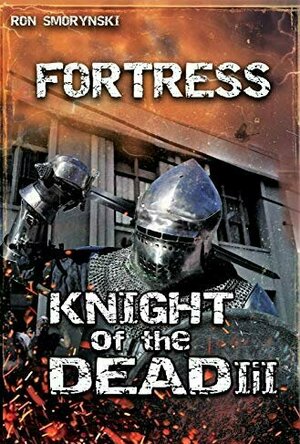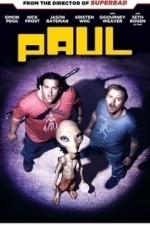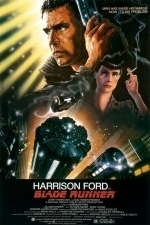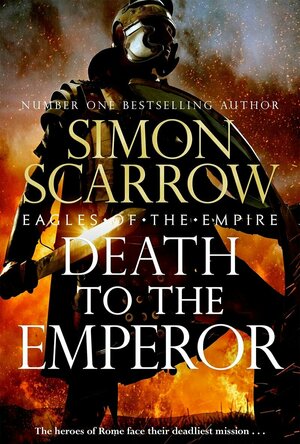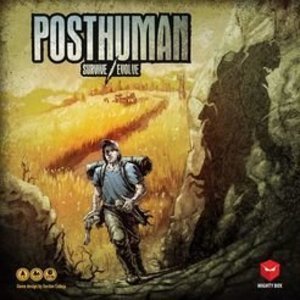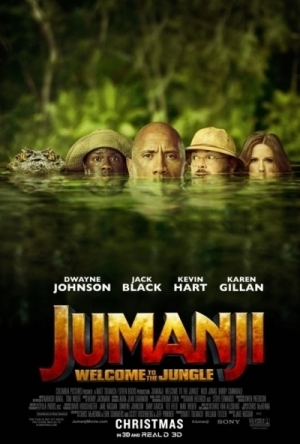Search
Search results
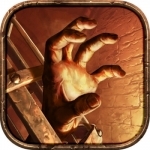
Hellraid: The Escape
Games
App
IMPORTANT: Due to the high-quality graphics, Hellraid: The Escape is compatible only with iPad 2 &...
EmersonRose (320 KP) rated Knight of The Dead III: Fortress in Books
Nov 20, 2019
Knight of the Dead III: Fortress continues the adventures of Ronan and his family as they struggle to survive in the Zombie Apocalypse. The third book is a non-stop action-packed adventure as Ronan really starts to build up his fortress in a school building, slowly growing his kingdom. He has finally saved enough people that there really starts to be some interesting dynamics between the survivors and a look to the future can begin to happen. In this book, the stakes are raised as the zombies continue to change and seemingly become smarter and more dangerous. With the stakes raised, his family finally in a stable situation, Ronan sets out full force to save as many others as he can.
Without a doubt, my favorite part if this series is the unique take at apocalypse fiction by throwing in medieval fighting. This book does not disappoint as there are thrilling action scenes, plenty of training sequences, and the knight continuing to become a legend in the modern world. This unique touch simultaneously gives the story a fun and engaging layer while also somehow adding to the believability of the world that author Ron Smorynski has created. With the detailed fighting knowledge, and the time spent on gathering food, training, getting water, and fortifying the school, as a reader you can believe that they would have survived this long.518hheXuwoL._SY346_
This book focuses more on rescue then the previous books and as the cast of characters continues to grow there is less time spent one on one with people. This decreases the amount of individual tension between characters, but there is still tension as Ronan is the dictator and continues to push his Christian values on everyone within his fortress. This dynamic makes sense in the situation, but I like the moments when Ronan gets to be humanized more in small moments. A hug with his wife or children, a cute moment with him and the children, his appreciated a moment of laughter. These moments are very sweet in the otherwise horror-filled world they live in, and Ronan gets to relax the least as a leader.
Pet peeve of mine in apocalypse fiction is the idea that you are completely alone in the world. That although you survived no one else on the planet could have. Smorynski does not fall into this trap. He acknowledges the bigger world, although his characters have very little contact with it. And there is a good balance between the characters feeling alone and being alone. Many people have died in the month of the apocalypse, but they are still finding survivors. There are other people who are holding on. This makes the series more exciting for me and also keeps me excited for the books to come as I enjoy watching the growing community of survivors.
This series is exciting and gripping from beginning to end. Smorynski does a good job of justifying the risks that his characters take and ups the stakes and consequences as the book progresses, making the danger feel read from beginning to end. If you like zombie stories or apocalypse fiction, then I would highly recommend checking this series out. I cannot wait to see where the story goes from here!
Without a doubt, my favorite part if this series is the unique take at apocalypse fiction by throwing in medieval fighting. This book does not disappoint as there are thrilling action scenes, plenty of training sequences, and the knight continuing to become a legend in the modern world. This unique touch simultaneously gives the story a fun and engaging layer while also somehow adding to the believability of the world that author Ron Smorynski has created. With the detailed fighting knowledge, and the time spent on gathering food, training, getting water, and fortifying the school, as a reader you can believe that they would have survived this long.518hheXuwoL._SY346_
This book focuses more on rescue then the previous books and as the cast of characters continues to grow there is less time spent one on one with people. This decreases the amount of individual tension between characters, but there is still tension as Ronan is the dictator and continues to push his Christian values on everyone within his fortress. This dynamic makes sense in the situation, but I like the moments when Ronan gets to be humanized more in small moments. A hug with his wife or children, a cute moment with him and the children, his appreciated a moment of laughter. These moments are very sweet in the otherwise horror-filled world they live in, and Ronan gets to relax the least as a leader.
Pet peeve of mine in apocalypse fiction is the idea that you are completely alone in the world. That although you survived no one else on the planet could have. Smorynski does not fall into this trap. He acknowledges the bigger world, although his characters have very little contact with it. And there is a good balance between the characters feeling alone and being alone. Many people have died in the month of the apocalypse, but they are still finding survivors. There are other people who are holding on. This makes the series more exciting for me and also keeps me excited for the books to come as I enjoy watching the growing community of survivors.
This series is exciting and gripping from beginning to end. Smorynski does a good job of justifying the risks that his characters take and ups the stakes and consequences as the book progresses, making the danger feel read from beginning to end. If you like zombie stories or apocalypse fiction, then I would highly recommend checking this series out. I cannot wait to see where the story goes from here!
Gareth von Kallenbach (980 KP) rated Paul (2011) in Movies
Aug 7, 2019
Can you think of a better vacation than going to the San Diego Comic-Con, then hopping into an RV with your best friend to travel around America checking out various UFO hot spots? If you answered “Heck No!” then you would get along just fine with Klingon-speaking best friends from the UK, Graeme Willy (Simon Pegg) and Clive Gollings (Nick Frost).
That’s how the movie Paul begins, at one of the greatest conventions, San Diego Comic Con. Then Graeme and Clive are off on their cross country adventure during which they meet all sorts of interesting people including Paul (voiced by Seth Rogen), an alien whose ship crash landed on Earth 60 years ago and, until his recent escape, had been a “guest” at a secret military base. After some fainting, wetting pants and fears about probing have been addressed, Graeme and Clive agree to help Paul get to where he can meet his mothership and go home.
At this point the movie goes from funny to really funny and as the three of them get to know each other better, Graeme and Clive soon realize that Paul is just a everyday guy like them (well except for the whole alien thing). They also meet Bible-thumper Ruth (Kristen Wiig) whom they accidentally kidnap, causing her shotgun-toting father to chase after them. Of course there are government agents also looking for them and the movie even throws in a few high speed chases. To round out the road trip there’s even a fight at a biker bar (Star Wars fans will love the band playing inside). Will they achieve their goal and send Paul home? Will there be probing? Klaatu barada nikto?
The special effects that went into creating Paul and his realistic interactions with the human cast were amazing, however the humorous soul that Seth Rogen breathed into Paul made the character truly out of this world. Not since Mork and Gordon Shumway (ALF) has an alien made me laugh so hard. Simon Pegg and Nick Frost were their usual extremely funny dynamic-duo selves. The movie is loaded with well-placed humorous references to sci-fi movies and shows, a well-balanced amount of action and great character interactions with an unbelievable supporting cast that includes Jason Bateman, Jane Lynch and Bill Hader just to name a few. This movie is not only one that I want to see again in the theatre but one that I also want to own.
That’s how the movie Paul begins, at one of the greatest conventions, San Diego Comic Con. Then Graeme and Clive are off on their cross country adventure during which they meet all sorts of interesting people including Paul (voiced by Seth Rogen), an alien whose ship crash landed on Earth 60 years ago and, until his recent escape, had been a “guest” at a secret military base. After some fainting, wetting pants and fears about probing have been addressed, Graeme and Clive agree to help Paul get to where he can meet his mothership and go home.
At this point the movie goes from funny to really funny and as the three of them get to know each other better, Graeme and Clive soon realize that Paul is just a everyday guy like them (well except for the whole alien thing). They also meet Bible-thumper Ruth (Kristen Wiig) whom they accidentally kidnap, causing her shotgun-toting father to chase after them. Of course there are government agents also looking for them and the movie even throws in a few high speed chases. To round out the road trip there’s even a fight at a biker bar (Star Wars fans will love the band playing inside). Will they achieve their goal and send Paul home? Will there be probing? Klaatu barada nikto?
The special effects that went into creating Paul and his realistic interactions with the human cast were amazing, however the humorous soul that Seth Rogen breathed into Paul made the character truly out of this world. Not since Mork and Gordon Shumway (ALF) has an alien made me laugh so hard. Simon Pegg and Nick Frost were their usual extremely funny dynamic-duo selves. The movie is loaded with well-placed humorous references to sci-fi movies and shows, a well-balanced amount of action and great character interactions with an unbelievable supporting cast that includes Jason Bateman, Jane Lynch and Bill Hader just to name a few. This movie is not only one that I want to see again in the theatre but one that I also want to own.

Mr. Potato Head: School Rush
Book and Education
App
#1 Kids App in over 20 countries! #1 Book App in over 60 countries! Are you ready for a...
Nick Friesen (96 KP) rated Blade Runner (1982) in Movies
Jul 13, 2017
Dark and gorgeous setting (4 more)
Harrison Ford
Thought-provoking premise
That moody Vangelis score
Rutger Hauer
Best in Class Cyberpunk Neo-Noir
Most Sci-Fi fans these days probably rank Blade Runner somewhere in their top five favorites. Its status and influence on Sci-Fi, especially in the Cyberpunk sub-genre, is undeniable. When it was first released in 1982, however, it was not so well appreciated. It was met with polarized reviews and underwhelming domestic box office figures. This was probably due to some misplaced expectations of the movie. The studio erroneously marketed Blade Runner as an action/adventure, and not to mention, Harrison Ford was riding the fame of another Sci-Fi franchise that was much more action-oriented. It's no surprise then, that audiences and critics alike were initially turned off by the slow-burn pacing of detective noir that Blade Runner pulled into a science fiction setting. Today, Blade Runner is a celebrated masterpiece of filmmaking and adored by fans around the world. However, with a sequel coming soon, those new to the franchise might be a little confused due to the existence of multiple versions of the film. Let's clear that up a bit.
Fast-forward ten years to 1992, when the world received the Director's Cut of the film. At the time, Blade Runner had picked up in popularity through video rental and the international market, and the studio was prompted to release an official Director's Cut after an unofficial version was being made available from a workprint. The Director's Cut was the first introduction to Blade Runner for a whole new generation, including myself.
Fast-forward fifteen more years to 2007, when Ridley Scott brought Blade Runner fans his definitive version of the movie, the Final Cut. Blade Runner: The Final Cut was digitally remastered and reworked by Ridley Scott with complete artistic freedom, whereas the Director's Cut was created by the studio without his involvement. This version fixes some technical problems that persisted from the theatrical version to the Director's Cut, and adds back a little story to better fulfill Ridley Scott's original vision for the film.
If you're looking to get into Blade Runner before Blade Runner 2049 hits theatres in October, the Final Cut is probably the best place to start. It offers the most cohesive viewing experience, complete with restored visuals. Believe me when I tell you there is no movie quite like Blade Runner. Watching Rick Deckard (Harrison Ford) track down and "retire" replicants on the streets of a dystopian Los Angeles awash in neon signs never ceases to fill me with awe. Rutger Hauer's performance as the main antagonist, Roy Batty, is both chilling and thought-provoking, making viewers question what being human truly means.
Blade Runner is now widely considered to be not just the first example of Cyberpunk in film, but also the best. And for good reason, as every frame is a work of art, and the philosophical questions it first posed 35 years ago are still being debated today. Us die-hard fans can only pray the upcoming sequel doesn't completely obliterate the mystery and pathos of the replicant condition.
Fast-forward ten years to 1992, when the world received the Director's Cut of the film. At the time, Blade Runner had picked up in popularity through video rental and the international market, and the studio was prompted to release an official Director's Cut after an unofficial version was being made available from a workprint. The Director's Cut was the first introduction to Blade Runner for a whole new generation, including myself.
Fast-forward fifteen more years to 2007, when Ridley Scott brought Blade Runner fans his definitive version of the movie, the Final Cut. Blade Runner: The Final Cut was digitally remastered and reworked by Ridley Scott with complete artistic freedom, whereas the Director's Cut was created by the studio without his involvement. This version fixes some technical problems that persisted from the theatrical version to the Director's Cut, and adds back a little story to better fulfill Ridley Scott's original vision for the film.
If you're looking to get into Blade Runner before Blade Runner 2049 hits theatres in October, the Final Cut is probably the best place to start. It offers the most cohesive viewing experience, complete with restored visuals. Believe me when I tell you there is no movie quite like Blade Runner. Watching Rick Deckard (Harrison Ford) track down and "retire" replicants on the streets of a dystopian Los Angeles awash in neon signs never ceases to fill me with awe. Rutger Hauer's performance as the main antagonist, Roy Batty, is both chilling and thought-provoking, making viewers question what being human truly means.
Blade Runner is now widely considered to be not just the first example of Cyberpunk in film, but also the best. And for good reason, as every frame is a work of art, and the philosophical questions it first posed 35 years ago are still being debated today. Us die-hard fans can only pray the upcoming sequel doesn't completely obliterate the mystery and pathos of the replicant condition.

Waking Mars
Games
App
Apple's 2012 iPad Game of the Year Runner-Up! Bring A Sleeping Planet Back To Life Epic adventure,...
David McK (3663 KP) rated Death to the Emperor (Macro and Cato #21) in Books
Apr 10, 2023
The Year 2001.
I wondered into a local branch of Eason's, and saw Under the Eagle on offer, sold for an introductory price (which I can't even remember), and with a blurb that sounded interesting. That, and a quote from the king of historical action-adventure fiction Bernard Cornwell that 'I really don't need this kind of competition ... a great read'.
Jump forward just over 20 years, and we're now onto book #20 in the series, and back in the Roman province of Brittania after the intervening books have had us all over the Roman Empire.
The series has also lost the 'Eagle' that was always included somewhere in the earlier titles (Under the Eagle, The Eagle's Conquest, The Eagle and the Wolves etc), with that word last used in the title in entry # 7 (The Eagle in the Sand).
That's not all that has changed: Cato is no longer the scared young man he had been in the first entries; Macro no longer the seasoned Centurion. Now, Macro is retired from active service whilst Cato - who now has a family of his own - has risen in rank above that that Macro ever reached but is still firm friends with the latter.
We've now also reached a pivotal moment in Roman Britain history, with the Boudicean revolt just about to kick off (as it does here) and as the Romans finally capture and raze the Druid stronghold of Mona.
Those two events form the backbone of this novel, with Cato involved in the attack on Mona whilst Macro is charged with the defence of Camulodunum (Colchester) and in charge of the Roman Reserves there whilst the main army is away on campaign, just after the Governor of Britain has further alienated their Icenian allies.
As with all of the Simon Scarrow books I've read, the history is worn lightly enough to make an enjoyable read: this is not a dry, stuffy retelling of events but rather uses the real historical events as the backbone for the story being built around it.
This, I have to say, is also the first in the series that I can remember ending in a definite cliffhanger ...
(I might have to go back and re-read the previous now)
I wondered into a local branch of Eason's, and saw Under the Eagle on offer, sold for an introductory price (which I can't even remember), and with a blurb that sounded interesting. That, and a quote from the king of historical action-adventure fiction Bernard Cornwell that 'I really don't need this kind of competition ... a great read'.
Jump forward just over 20 years, and we're now onto book #20 in the series, and back in the Roman province of Brittania after the intervening books have had us all over the Roman Empire.
The series has also lost the 'Eagle' that was always included somewhere in the earlier titles (Under the Eagle, The Eagle's Conquest, The Eagle and the Wolves etc), with that word last used in the title in entry # 7 (The Eagle in the Sand).
That's not all that has changed: Cato is no longer the scared young man he had been in the first entries; Macro no longer the seasoned Centurion. Now, Macro is retired from active service whilst Cato - who now has a family of his own - has risen in rank above that that Macro ever reached but is still firm friends with the latter.
We've now also reached a pivotal moment in Roman Britain history, with the Boudicean revolt just about to kick off (as it does here) and as the Romans finally capture and raze the Druid stronghold of Mona.
Those two events form the backbone of this novel, with Cato involved in the attack on Mona whilst Macro is charged with the defence of Camulodunum (Colchester) and in charge of the Roman Reserves there whilst the main army is away on campaign, just after the Governor of Britain has further alienated their Icenian allies.
As with all of the Simon Scarrow books I've read, the history is worn lightly enough to make an enjoyable read: this is not a dry, stuffy retelling of events but rather uses the real historical events as the backbone for the story being built around it.
This, I have to say, is also the first in the series that I can remember ending in a definite cliffhanger ...
(I might have to go back and re-read the previous now)
Purple Phoenix Games (2266 KP) rated Posthuman in Tabletop Games
Aug 25, 2021
So many storytellers have attempted to predict, or at least depict, the future of humanity. Many assert that a cataclysmic event will trigger some dark post-apocalyptic culture of humanity’s last breath on Earth. Others would have us fleeing to the stars to colonize and begin our species anew. But what if the former was correct and instead of becoming X-Men humans would rapidly mutate and become… something else entirely?
Posthuman is set in that dark post-apocalyptic horrorscape and is an exploration adventure game with character upgrading and dice-driven combat. The twist here is that humans are trying to escape the mutant creatures to The Fortress, a safe haven for all, but once infected may turn mutant and also turn on the party to prevent that glorious end. In this review, however, I will be playing through the solo rules, and they do not have players turning into mutants during the game. Bummer, eh?
DISCLAIMER: We are using the Kickstarter Deluxe version of the game. We do have the Defiant expansion from the KS campaign, but will not be using it for this review (I don’t think). Also, we do not intend to cover every single rule included in the rule book, but will describe the overall game flow and major rule set so that our readers may get a sense of how the game plays. For more in depth rules, you may purchase a copy from the publisher directly or from your FLGS. -T
To setup consult the rulebook, as there are so many decks of cards and character setup steps that need to happen that I just cannot detail here. Once setup your play area will look something like the photo below. Once setup is complete you are ready to begin your journey to The Fortress.
Posthuman is played over a series of rounds until the player wins or loses. The only way to win is to enter The Fortress before the Event deck runs out, and obviously the only way to lose is to run the Event deck out of cards or become a mutant by suffering five scars.
A round consists of several phases. The first phase is Event Resolution. The player will flip the top Event card and resolve its text. These Events could be a one-shot bad (or good) thing for the player, or may be an ongoing Seasonal Event that will stay in play until another Seasonal Event is drawn.
After the Events, characters will need to Eat to survive. Characters will be able to forage for food in a subsequent phase, but know that food is very important and if characters go too long without eating they will be suffering penalties of their Health and Morale.
Once fed (or starved, I suppose), the player will Declare an Action from the following: Camp, Forage, Scout, or Move (in multiplayer there is an additional action as well). To Camp players will forego any other action to heal their character. When a character Forages they will flip the current tile’s marker to show it may no longer be foraged and draw a Supplies card to see what supplies they will be able to gather. These could be more food tokens, ammo, equipment or weapons. To Scout a character will draw terrain tiles equal to the number of exits shown on their current terrain tile. The player will place the tiles however they want and this will provide insight into future locations and what they may hold. Lastly a player may Move into a connected terrain tile and begin having encounters upon it.
Most of the action in Posthuman comes as a result of having encounters on terrain tiles. Depending on where the character meeple is located on the Central Board track encounters will be drawn from the level one, two, or three decks and encountered immediately. Most of the encounters are combats, and I could write another whole post on combat, but I will spare you the details and merely say that combat is very involved and encompasses many steps to resolve. At the end of the combat a character may receive the encountered creature card as a VP trophy to be spent later on upgrades. The VP card may also instruct the player to move the meeple one space closer to The Fortress on the Central Board track. The other type of encounter card presents choices for the player to make or stat tests to overcome via die rolls.
Play continues in this fashion until the player wins by reaching The Fortress, or by losing to the forces set against them.
Components. This box is chock FULL of components and they are all super high-quality and enjoyable to play with. I do have a couple issues with some bits. Firstly, the player boards are quite small, and the tracking cubes are not meant for big meaty paws at all. Similarly, the tracking chits to be used for stats on the player board are flimsy and don’t really stay in place too well. Also the game comes with two different shades of gray player meeple colors and NOT a purple option. Shame! Shame! Shame!
When all is said and done Posthuman delivers an exciting experience on the table for a solo player and indulges the player’s need to roll dice on the regular. Just me? Didn’t think so. The combat is great, but I found myself discarding more enemies than defeating in some games and that is quite annoying. One game I refused to Scout at all and that totally bit me in the booty. So Scout, y’all.
Just know that playing this solo is NOT a cakewalk at all. I watched a playthrough video where the host won the game but nearly every roll of the die was favorable and every combat successful. Even still, she nearly ran out of time and lost the game. So games really can come down to the wire. Now, I haven’t really gotten very close to winning yet, but my day is coming!
I like this one a lot, and will certainly be going back to it for my solo plays. I have been playing some really great solo games lately, and I am very thankful for that. Posthuman, however, I don’t think will get much multiplayer action at my house. The rules are plentiful and the people I normally game with do not enjoy rules-heavy games. Similarly, I don’t think the theme is for everyone. I dig it, but different strokes and all. If you are in the market for a new (to you) game that can be played solo or multiplayer with an interesting theme and is pretty difficult, look up Posthuman. Just stay away from the mutants. These do NOT want to recruit you to their school for gifted people.
Posthuman is set in that dark post-apocalyptic horrorscape and is an exploration adventure game with character upgrading and dice-driven combat. The twist here is that humans are trying to escape the mutant creatures to The Fortress, a safe haven for all, but once infected may turn mutant and also turn on the party to prevent that glorious end. In this review, however, I will be playing through the solo rules, and they do not have players turning into mutants during the game. Bummer, eh?
DISCLAIMER: We are using the Kickstarter Deluxe version of the game. We do have the Defiant expansion from the KS campaign, but will not be using it for this review (I don’t think). Also, we do not intend to cover every single rule included in the rule book, but will describe the overall game flow and major rule set so that our readers may get a sense of how the game plays. For more in depth rules, you may purchase a copy from the publisher directly or from your FLGS. -T
To setup consult the rulebook, as there are so many decks of cards and character setup steps that need to happen that I just cannot detail here. Once setup your play area will look something like the photo below. Once setup is complete you are ready to begin your journey to The Fortress.
Posthuman is played over a series of rounds until the player wins or loses. The only way to win is to enter The Fortress before the Event deck runs out, and obviously the only way to lose is to run the Event deck out of cards or become a mutant by suffering five scars.
A round consists of several phases. The first phase is Event Resolution. The player will flip the top Event card and resolve its text. These Events could be a one-shot bad (or good) thing for the player, or may be an ongoing Seasonal Event that will stay in play until another Seasonal Event is drawn.
After the Events, characters will need to Eat to survive. Characters will be able to forage for food in a subsequent phase, but know that food is very important and if characters go too long without eating they will be suffering penalties of their Health and Morale.
Once fed (or starved, I suppose), the player will Declare an Action from the following: Camp, Forage, Scout, or Move (in multiplayer there is an additional action as well). To Camp players will forego any other action to heal their character. When a character Forages they will flip the current tile’s marker to show it may no longer be foraged and draw a Supplies card to see what supplies they will be able to gather. These could be more food tokens, ammo, equipment or weapons. To Scout a character will draw terrain tiles equal to the number of exits shown on their current terrain tile. The player will place the tiles however they want and this will provide insight into future locations and what they may hold. Lastly a player may Move into a connected terrain tile and begin having encounters upon it.
Most of the action in Posthuman comes as a result of having encounters on terrain tiles. Depending on where the character meeple is located on the Central Board track encounters will be drawn from the level one, two, or three decks and encountered immediately. Most of the encounters are combats, and I could write another whole post on combat, but I will spare you the details and merely say that combat is very involved and encompasses many steps to resolve. At the end of the combat a character may receive the encountered creature card as a VP trophy to be spent later on upgrades. The VP card may also instruct the player to move the meeple one space closer to The Fortress on the Central Board track. The other type of encounter card presents choices for the player to make or stat tests to overcome via die rolls.
Play continues in this fashion until the player wins by reaching The Fortress, or by losing to the forces set against them.
Components. This box is chock FULL of components and they are all super high-quality and enjoyable to play with. I do have a couple issues with some bits. Firstly, the player boards are quite small, and the tracking cubes are not meant for big meaty paws at all. Similarly, the tracking chits to be used for stats on the player board are flimsy and don’t really stay in place too well. Also the game comes with two different shades of gray player meeple colors and NOT a purple option. Shame! Shame! Shame!
When all is said and done Posthuman delivers an exciting experience on the table for a solo player and indulges the player’s need to roll dice on the regular. Just me? Didn’t think so. The combat is great, but I found myself discarding more enemies than defeating in some games and that is quite annoying. One game I refused to Scout at all and that totally bit me in the booty. So Scout, y’all.
Just know that playing this solo is NOT a cakewalk at all. I watched a playthrough video where the host won the game but nearly every roll of the die was favorable and every combat successful. Even still, she nearly ran out of time and lost the game. So games really can come down to the wire. Now, I haven’t really gotten very close to winning yet, but my day is coming!
I like this one a lot, and will certainly be going back to it for my solo plays. I have been playing some really great solo games lately, and I am very thankful for that. Posthuman, however, I don’t think will get much multiplayer action at my house. The rules are plentiful and the people I normally game with do not enjoy rules-heavy games. Similarly, I don’t think the theme is for everyone. I dig it, but different strokes and all. If you are in the market for a new (to you) game that can be played solo or multiplayer with an interesting theme and is pretty difficult, look up Posthuman. Just stay away from the mutants. These do NOT want to recruit you to their school for gifted people.
Phillip McSween (751 KP) rated Jumanji: Welcome to the Jungle (2017) in Movies
Feb 24, 2018 (Updated Feb 24, 2018)
Jumanji: Welcome to the Jungle is a solid film-going experience, albeit a little cheesy at times. While its overdone ending keeps it just short of a being an action/adventure classic, I have to say I was impressed with how well they were able to take the source material of the original and truly make it something entirely new. In this newer version of the remake, four kids in detention get trapped inside a video game and have to play their way out. They are eached armed with a set of "lives" and, just like in a game, losing lives brings you closer to losing everything. They must rely on the skills of their avatars to traverse the dangerous jungle terrain.
Jumanji gives you conventional funny meaning it's not going to be one of those films where you spend half of it doubled over in laughter. When it comes to characteristics of a solid film, however, the film checks all the boxes. Solid, hilarious characters that make it easy to root for them. The Bethany/Jack Black role alone was enough to keep a smile on my face for the majority of the movie. He is the ringleader in a lot of the hilarious moments, but the other stars (Dwayne Johnson, Kevin Hart) provide plenty of comedy as well. While the comedy isn't side-splitting, I give it it's due respect for being consistent. A solid, flowing story gets the same recognition as it never lingers in one spot for too long. The action does a good job of connecting plot points while not being overbearing.
I thought that by the time I finally got around to writing this, I would be recommending Jumanji for a home viewing. However, due to some great box office success, it's still kicking in theaters. So....go see it if you haven't already! I give it a solid 90.
Jumanji gives you conventional funny meaning it's not going to be one of those films where you spend half of it doubled over in laughter. When it comes to characteristics of a solid film, however, the film checks all the boxes. Solid, hilarious characters that make it easy to root for them. The Bethany/Jack Black role alone was enough to keep a smile on my face for the majority of the movie. He is the ringleader in a lot of the hilarious moments, but the other stars (Dwayne Johnson, Kevin Hart) provide plenty of comedy as well. While the comedy isn't side-splitting, I give it it's due respect for being consistent. A solid, flowing story gets the same recognition as it never lingers in one spot for too long. The action does a good job of connecting plot points while not being overbearing.
I thought that by the time I finally got around to writing this, I would be recommending Jumanji for a home viewing. However, due to some great box office success, it's still kicking in theaters. So....go see it if you haven't already! I give it a solid 90.

